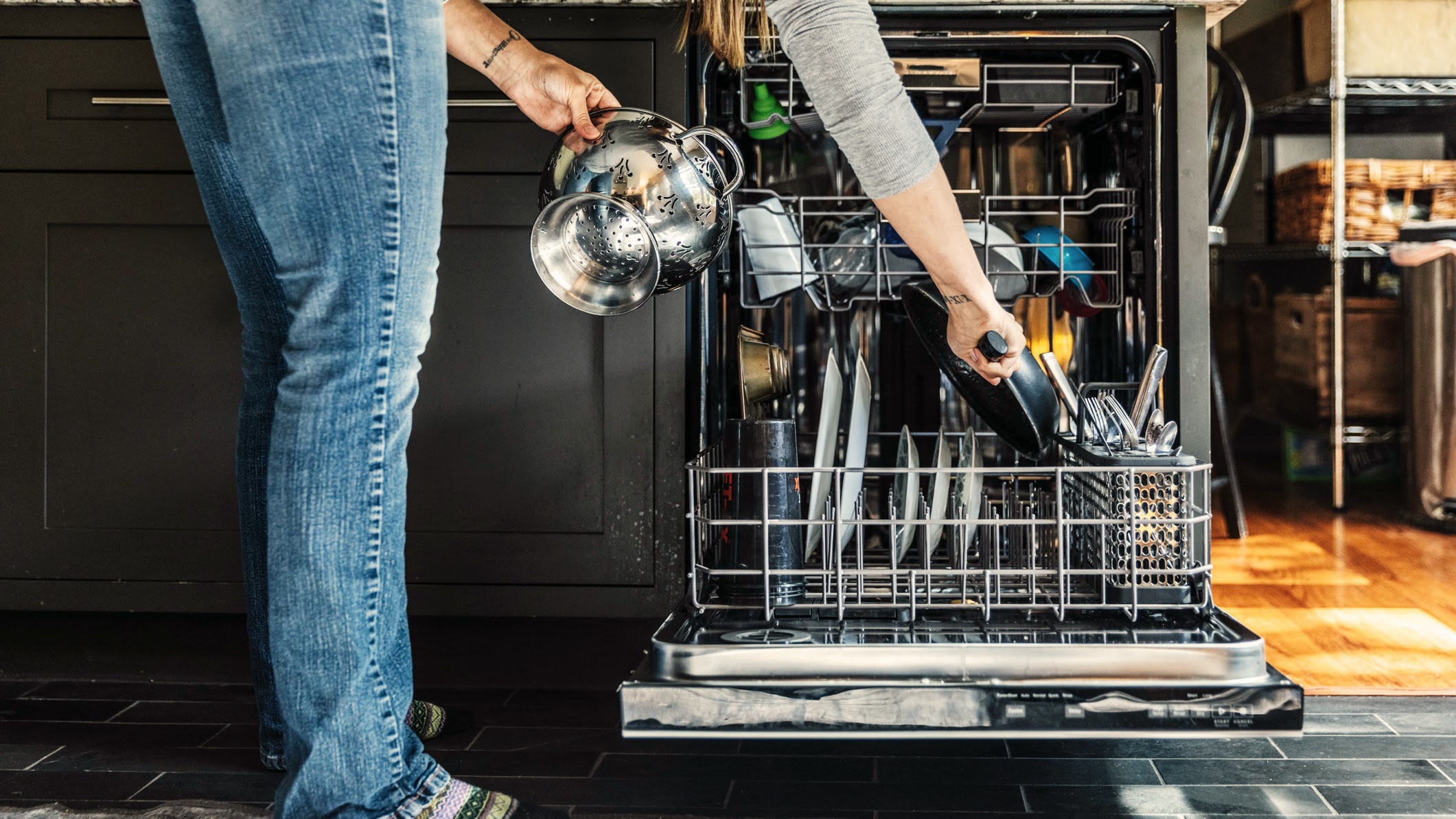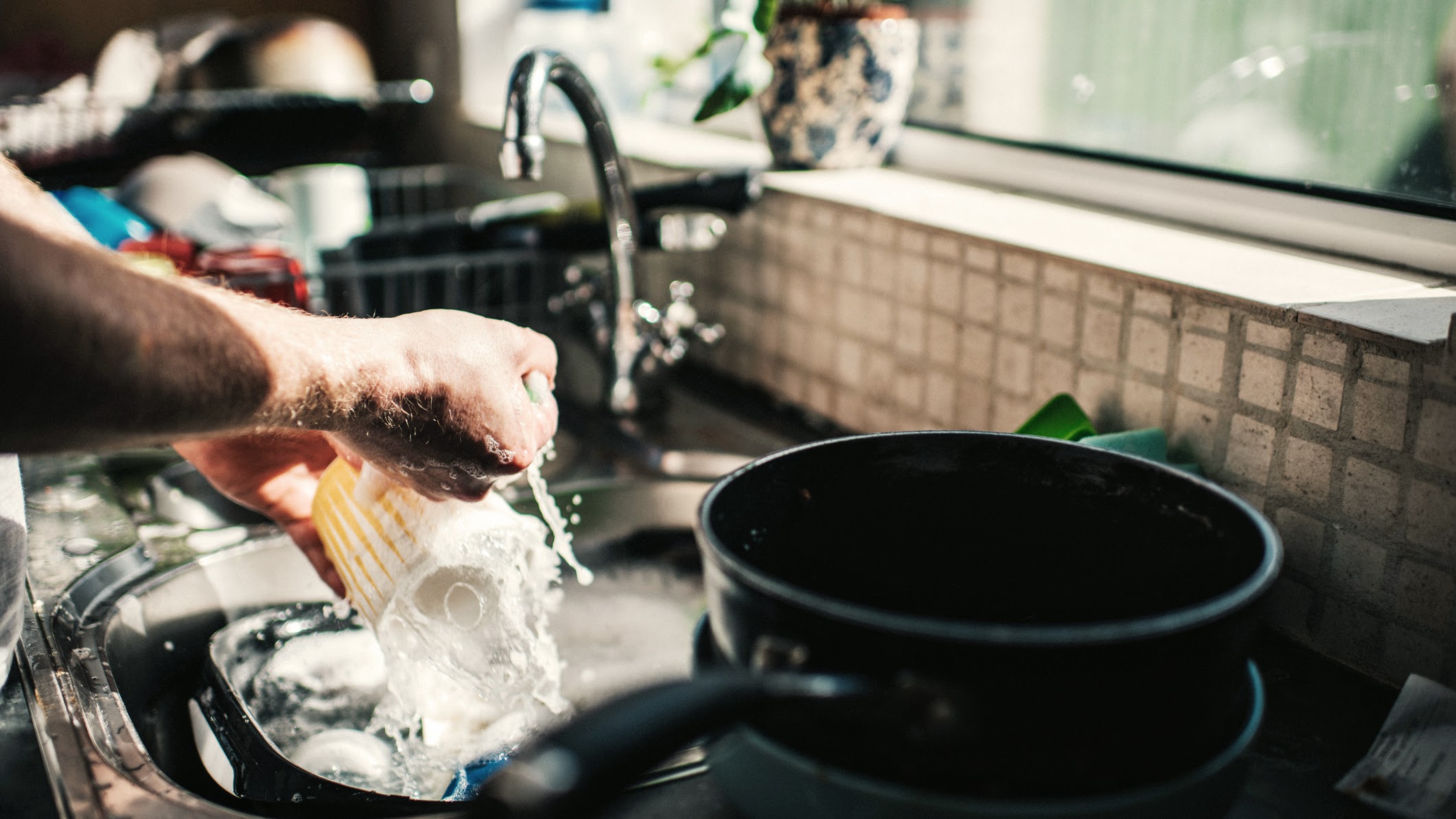How do dishwashers work? Discover how to use a dishwasher to keep your dishes sparkling clean
How do dishwashers work and are dishwashers actually better than hand-washing dishes?

If you’ve ever owned or used a dishwasher for any length of time, you’ll know how difficult it can be to go back to washing dishes by hand if your machine breaks down, or perhaps when you visit friends and family during the holidays.
No more scrubbing at caked-on food, drying dishes with damp dishcloths, or leaving trays to soak in hot soapy water for hours. The best dishwashers are often unsung kitchen heroes and bring so much convenience to what can be one of the worst household chores. But have you ever stopped to wonder how dishwashers work?
Beyond the convenience dishwashers offer, understanding how a dishwasher works can also help you get the most out of your appliance, from using it to its maximum effect to helping troubleshoot problems.
Below, we delve into the inner workings of the dishwasher and explain why they’re such a good arsenal in your defense against dirty pots and pans.

How do dishwashers work?
Most dishwashers, regardless of the make or model, work in a similar way.
Nevertheless, it's highly recommended that you read the manufacturer guidelines and care instructions, specific to your dishwasher, to ensure that your machine performs at its best and lasts as long as possible.
- Cold water is piped from your home’s water supply into the bottom of the machine via the water intake valve.
- The automatic dispenser fitted in the dishwasher door flips open and drops the dishwasher tablet into this water.
- A heating element in the base of the dishwasher warms the water to the required temperature, determined by the setting that’s been selected. This typically ranges from 86–150°F (30–65°C).
- The dishwasher tablet dissolves in the warm water.
- Once heated, jets of warm water squirt through holes in a metal bar at the bottom of the machine towards a metal paddle that spins and directs the water towards the plates and other crockery and cutlery on the bottom level.
- Water is also directed up through chutes along the sides of the dishwasher and squirted through holes in an upper plastic paddle to wash the crockery on the top level. This water ends up cooling on the way up, meaning it’s not as hot as on the lower level. This is why some dishes, pots, and pans are marked as dishwasher safe, but only if used on the top rack.
- Positioning your dishes, pots, and pans matters because if you overfill the dishwasher, the water can’t reach every section, or dirty water gathers inside your glasses and bowls.
- After the water bounces off your plates, removing stains and grease, it falls back to the bottom of the machine, where it is heated and pumped around the circuit again.
- Dirty water is drained and the process is repeated with clean water as the dishes are rinsed.
- The water and any debris drain away, and the hot water turns to steam and evaporates, thus washing and drying your dishes at the same time.

Do dishwashers save water?
Dishwashers use a set and controlled amount of water for each cycle, typically dishwashers utilise less water than when washing dishes by hand in a sink. Especially if you leave the water running continuously or rinse each item after each wash.
Sign up to receive the latest news, reviews, buying guides and deals direct to your inbox
Dishwashers also help save water because the high-pressure jets can remove caked-on food quickly and efficiently, while the hotter temperatures can lead to better cleaning and sanitization, allowing for shorter wash cycles and less water usage overall.
In reality, though, the savings are relatively minimal, and if you’re pre-rinsing your dishes or running your dishwasher when it’s only half full, it can be easy to undo these savings without realizing it.
How does a dishwasher differ from hand washing?
Dishwashers differ from hand washing because they use a controlled amount of heated water that’s typically hotter than what flows from your tap. They then direct high-pressure jets of this heated water at your dishes to neutralize the grease and remove food debris and stains.
This is a convenient, time-saving alternative to scrubbing the dishes by hand.
The dirty water is drained and more clean water rinses the dishes. The heat produced by the dishwasher also helps to dry the dishes, allowing you to achieve two tasks in one. Ultimately, whether you wash dishes by hand or in a dishwasher, both methods produce the same results.
Where do dishwashers drain?
Dishwashers typically drain into your kitchen's plumbing system, usually connecting to the same line your sink uses via a drain hose.
One end of the drain hose is connected to the bottom of the dishwasher tub and carries the dirty water and any food and detergent away from the dishwasher. The other end connects to a drain pipe or inlet under your sink.
If your kitchen sink has a garbage disposal, the dishwasher drain hose can also be connected to the disposal unit.

Is it better to wash by hand or use a dishwasher?
Dishwashers are designed for efficiency and convenience. They can save energy, time, and water while allowing you to clean your dishes with minimal effort.
They are often seen as more hygienic, too, because they use controlled amounts of hot water and detergent, targeting dishes with high-pressure jets. This helps shift hard-to-get-rid-of stains without hours of soaking or scrubbing and helps remove any bacteria to guarantee your plates are clean.
By comparison, hand washing is more time-consuming, but it gives you direct control over the cleaning process. You can add more detergent where needed or ensure you get into all the nooks and crannies the dishwasher jets may miss.
Fragile items, or pots and pans with non-stick coating, are usually better suited for hand washing due to the cooler water temperatures.
As a rule, dishwashers are generally more efficient and time-saving for larger loads, while hand washing can be more suitable for fragile items or smaller loads, but most people will find a balance between the two.
Ultimately, the decision comes down to your personal preferences and lifestyle. Discover how to clean a dishwasher to keep your machine in the best possible condition.
Final Thoughts
Dishwashers bring many benefits, from saving time and energy to ensuring your dishes are sparkly clean and bacteria-free.
You need to ensure you’re loading your machine correctly and efficiently, as well as giving it regular care and maintenance, according to the manufacturer's guidelines.
Dishwashers can’t replace hand washing entirely, but they can be game-changing in most households.

Victoria Woollaston, with nearly 20 years of experience, has reviewed gadgets, beauty tech, and household appliances for WIRED, TechRadar, and Expert Reviews. She specializes in critiquing coffee makers and small appliances for Top Ten Reviews. Victoria is also the founder and editor of inclusive beauty and grooming sites mamabella and MBman.
- Emily DiamondHomes Editor
